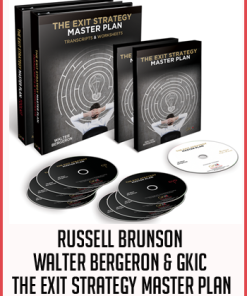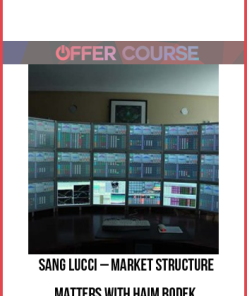- ×
 Hither - Fast Track Forex Course 1 × $199
Hither - Fast Track Forex Course 1 × $199 - ×
 Walter Bergeron & GKIC – The Exit Strategy Master Plan 1 × $49
Walter Bergeron & GKIC – The Exit Strategy Master Plan 1 × $49 - ×
 Jeremy Miner – 7 Figure Sales Training – Elite 8 Week Sales Training Program 1 × $35
Jeremy Miner – 7 Figure Sales Training – Elite 8 Week Sales Training Program 1 × $35 - ×
 Simpler Options – John Carter – High Frequency Trading 1 × $29
Simpler Options – John Carter – High Frequency Trading 1 × $29 - ×
 Lee Holden - The Five Elements QiGong Online Program 1 × $49
Lee Holden - The Five Elements QiGong Online Program 1 × $49 - ×
 Nick Moreno - Messenger Bots For Entrepreneurs 1 × $105
Nick Moreno - Messenger Bots For Entrepreneurs 1 × $105
Emini Day Trading Course
$5,000 Original price was: $5,000.$199Current price is: $199.
Category: Forex & Trading Tag: Emini Day Trading Course

Emini Day Trading Course
Sale page: https://www.daytradingcourse.com/
Archive page: http://archive.is/18Avp
Emini Futures DayTradingCourse.com
Emini Day Trading Course Overview
Dear Friend,
In 1991, I decided to trade full time. I figured out a method of swing trading stocks that worked quite well, but I really wanted to daytrade futures (get in and out of a trade in a short time frame, in the same day, after making a reasonable profit). I couldn’t find the technology to do it without driving to downtown Atlanta and sitting at a broker’s office all day.
In early 1993 I discovered the technology for daytrading from home and dove into it head first, building and testing mechanical indicators full time. Back then there weren’t many books or courses on real time futures daytrading. Like most guys with a degree in Electrical Engineering, I figured I could use my technical expertise to program mechanical indicators to give me buy and sells signals for the futures market.
Hundreds of intense hours later, it hit me that I could actually see what was going to happen on the live chart before my high tech indicators triggered a buy or sell signal, if they triggered one at all. Why? Because during my research I had been introduced to Elliott Wave analysis, which essentially says that it is mass trader psychology which is the primary driver of markets.
Elliott Wave analysis is an often misunderstood methodology used to analyze the price action of stocks and predict where the price will likely move next. I had actually taken classic Elliott Wave analysis, studied and then simplified it for the purpose of making money rather than for being an Elliott Wave intellectual.
During this time in the early 1990’s I was an active participant in a “techy” mailing list for indicator builders. As I discovered things, I shared them with others on the list, if they were interested, however most weren’t interested in anything they couldn’t convert into an indicator or a mechanical system. That shocked me. Most of these guys didn’t want to look at patterns on the chart. Most only wanted to code indicators and trade what the indicator told them to do.
Let that sink in.
They didn’t want to look at the chart.
They wanted a mechanical system which automatically told them what to do. They didn’t want to become traders. They wanted the computer to become the trader.
Let me clarify this distinction. There’s two major types of traders.
One type (not me) are mechanical system traders. The mechanical system in the computer tells them what to do and they do it. So they really don’t have to be there. They can hire a minimum wage person to enter the orders that the mechanical system generates. Or they can have the mechanical system enter the orders directly with the broker while the trader is off playing golf.
This is what “dream merchants” sell. A lot of new daytraders think that their job is to find a good mechanical system that they can install in their computer that will make them money while they’re off playing golf. There are plenty of vendors out there waiting to prey on people looking for one of these magic systems. The problem is that these systems are curve fitted to old data and then when hit with new data they don’t work. Of course, they all claim they don’t do this, however they’re all locked so that you can’t see what they’re doing, so you’ll never know. Anytime you hear someone say: If you had invested X dollars, at Y time ago this system would have generated Z dollars profit for you, then you can assume you’re looking at a curve fitted system and that it probably won’t work on new market data if the new data is different (and new data in the future is always different).
The other type of trader is called a discretionary trader. That’s me. This type of trader makes his own decisions on each trade. He’s actually a real trader. This is what I teach you to become, an independent discretionary trader. In our case, we look at a clean chart of the Emini S&P 500 futures with $TICK below. That’s it. No indicators. And based upon pattern recognition skills which you learn in my course, you learn to trade by yourself or you can join us online if you prefer chatting during the day.
Back to the single chart and why that’s all you need.
Let’s say we’re daytrading the Emini S&P 500 futures, the most popular futures contract in the world, which is traded by people all over the world.
Since so many people trade it, and since all these people have access to the internet and to all news instantaneously, then all that news and data and info is already built into the price action that you see on the screen. Therefore, the chart picture already contains all known information.
Hang on, it gets even better.
Frequently, the futures are also anticipatory, meaning their price action tends to lead the actual news, or anticipate it.
OK, back to my story, and how it can help you become a much better trader faster and avoid losses.
Occasionally a new participant in the old indicator builder mailing list would ask if anyone knew of a way to get some daytrading coaching, training, or mentoring, or if there was a course out there. He would usually be looking for daytrading secrets he wished he had known a year ago. Usually he never got a response because the mechanical system programmers all thought he was looking for the magic trading system that was automatic and profitable with no work on his part, that they were all working feverishly to build, and this new guy wanted it handed to him for free with no work.
A trader friend emailed me and suggested that I start teaching a couple people a month since my techniques were solid and since people were looking for coaching. I hadn’t considered teaching what I had learned so I thought long and hard about it and figured it just may be a good idea. After all, it would force me to become more structured in my techniques, not to mention that I had already taught people in other disciplines and professions so I had proven teaching ability. That was in 1994. I placed my first ad in the classified ad section of Technical Analysis of Stocks and Commodities Magazine. My first student came here in January of 1995 for a week of one-on-one training before his full year of support.
Web pages started becoming popular around 1998, so Day Trading Course of 1994 became DayTradingCourse.com in 1998.
I’ve refined the course over the past two plus decades and added a few things and thrown out things that became unnecessary, to make it even simpler.
I have one course. It’s a full, one year course.
There are two different ways to take Part 1 of the course, the first part of the course, and they’re at different prices.
Part 2 of the course is identical for everyone and is a full year of chat room and Daily Recap Webinars. More on that in a minute. Back to the different Part 1’s.
Part 1: Bite-Size Video Method:
I made 49 quality videos covering Part 1 of the course. These are 5 to 15 minute bite-size videos that you can access online from any internet connected device for up to one year, as many times as you want. I teach out of the manual and have a former student there to ask questions to ensure that the material is thorough and complete. You learn at your own pace. You probably won’t need the videos after the first month or two, but they’re there if you need them for a full year. The same material is covered in your printed manuals. If you use this Part 1 method, the full year course is $2,500. Part 2, the very important chat room and daily recap webinars, is included.
Part 1: One-on-One Method:
I teach you Part 1 of the course myself, One-on-One over 5 days, in person at my office, or online via gotomeeting; the full year course is $5,000. Part 2, the very important chat room and daily recap webinars, is included.
If I teach you at your home or at your office; the full year course is $6,000 plus my travel expenses. Part 2, the very important chat room and daily recap webinars, is included.
Adding a significant other or child is $1,000 each.
Regardless of the Part 1 method you select, the course comes with:
- Trading Pre-Course Manual
- Trading Computer Manual
- Trading Home Study Manual
- Trading Psychology Manual
- Trading Techniques Manual
- Part 2 of the Course (full year of chat room and daily recap webinars)
For Part 2 of the course, we have a chat room going every trading day from 9:30 a.m. Eastern until 4 p.m. Eastern for our students. This is included in your full year course. This is where you ask any questions and get clarification on anything. We also do computer configuration and Tradestation configuration if needed. This requires a microphone and speakers or headphones with a mic.
If you’re doing Part 1 of the course with bite-size videos, join in the Chat Room and ask your questions right there. Tech support too. All support is done in the Chat Room.
At 4 p.m. Eastern every trading day, we have a Daily Recap Webinar where you can show your paper trades, simulator trades, or real money trades, and receive constructive critiques. If you’re new, you can just watch for a while and learn from it until you’re comfortable jumping in. This accelerates your progress as a trader. It’s also fascinating.
Both the Chat Room and Daily Recap Webinar are essential parts of the course and critical to students putting into practice what they have learned in Part 1 of the course. The Chat Room and Daily Recap Webinars are where you learn the practical aspects and nuances of this methodology of trading.
The Daily Recap Webinar is recorded and available for download if you can’t attend or if you want to watch it again.
The course is complete with everything you’ll need to know, so you won’t need outside resources such as Investopedia.com or anything else to learn the material.
Be the first to review “Emini Day Trading Course” Cancel reply
Related products
Sale!
Rated 3.44 out of 5
Sale!
Forex & Trading
Rated 3.49 out of 5
Sale!
Rated 4.13 out of 5
Sale!
Forex & Trading
Rated 3.5 out of 5
Sale!
Forex & Trading
Rated 5 out of 5
Sale!
Rated 3.54 out of 5
Sale!
Forex & Trading
Rated 3.56 out of 5
Sale!
Forex & Trading
Rated 3.43 out of 5










19 reviews for Emini Day Trading Course
There are no reviews yet.